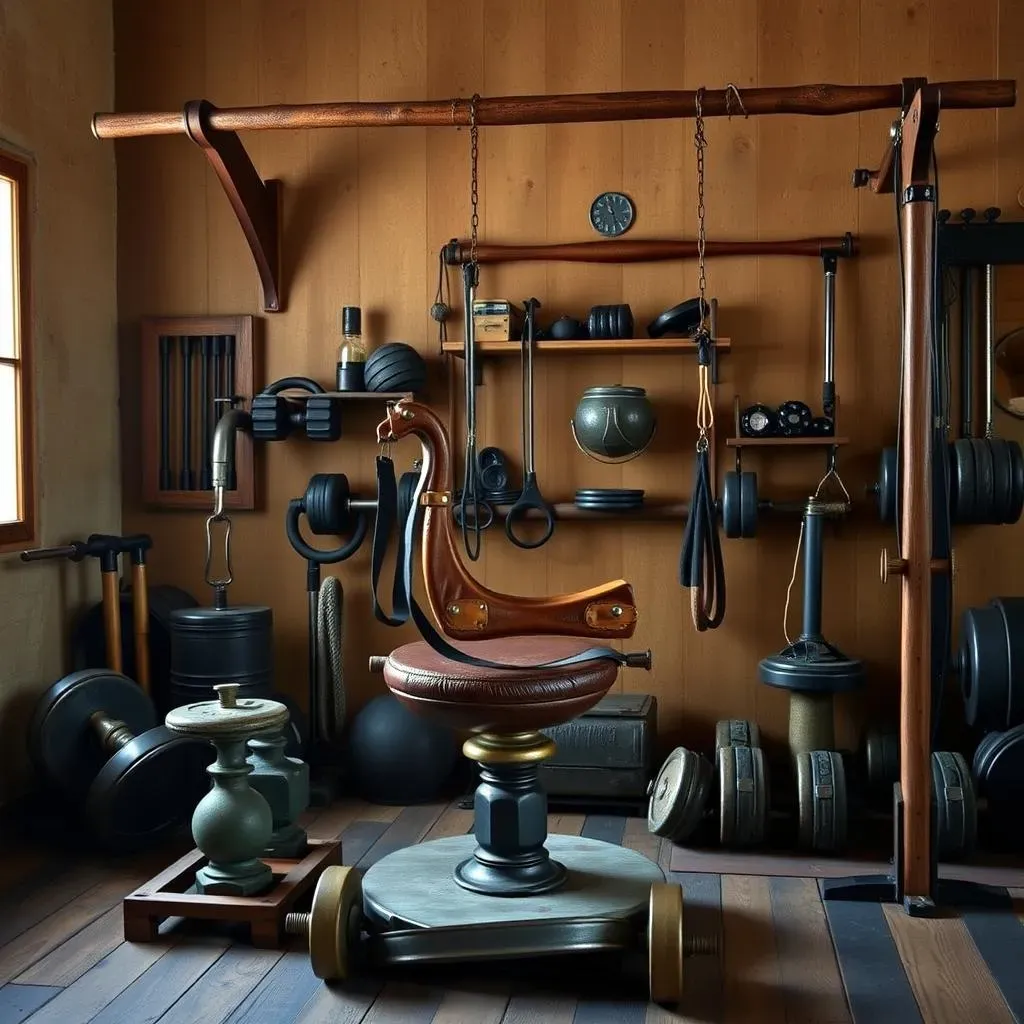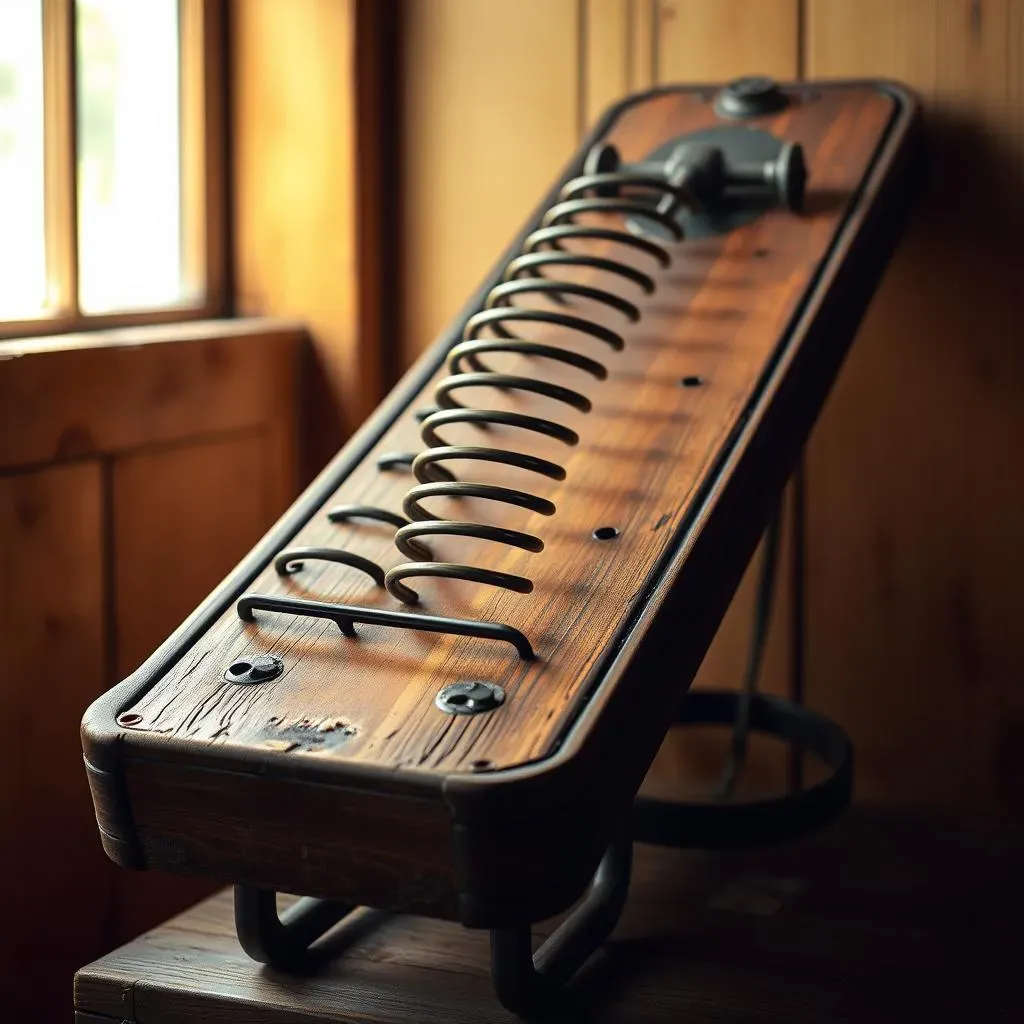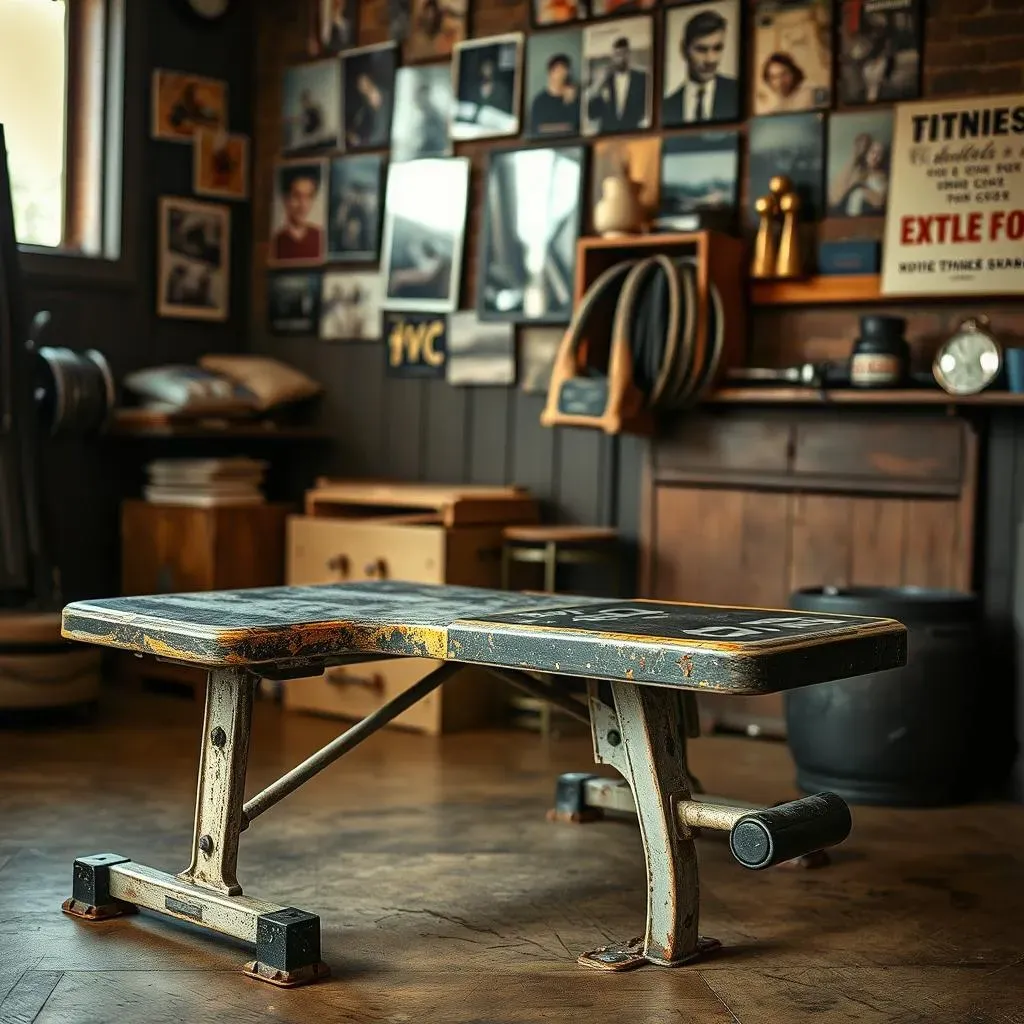Table of Contents
Forget the chrome and screens of modern fitness – are you ready to inject some soul into your sweat sessions? We're diving headfirst into the world of vintage home gym equipment, where dumbbells boast character and exercise benches tell stories. This isn't just about building muscle; it's about building a space that inspires, motivates, and reflects your unique style. Think gleaming chrome, worn leather, and the satisfying clang of iron – a far cry from the sterile environments of today's gyms.
Why Choose Vintage Home Gym Equipment? Benefits and Considerations
Why Choose Vintage Home Gym Equipment? Benefits and Considerations
Aesthetic Appeal and Uniqueness
Let's be honest, modern gyms can feel a bit… sterile. Rows of identical machines, blaring music, and the constant hum of electronics. Vintage home gym equipment offers a refreshing alternative. It's about injecting personality and style into your workout space. These aren't just tools for exercise; they're conversation starters, design elements, and pieces of history. Imagine a beautifully restored leather pommel horse sitting in your living room, or a set of meticulously crafted dumbbells displayed on a shelf. It's a statement.
Beyond the visual appeal, vintage equipment offers a unique tactile experience. The feel of cold steel, the scent of aged leather, the satisfying weight of a cast-iron kettlebell – these are sensations that modern, mass-produced equipment simply can't replicate. It's a connection to a bygone era, a time when craftsmanship and quality were paramount.
Consider this quote from a vintage fitness enthusiast: "My vintage equipment isn't just for show. It's a reminder of a time when things were built to last, when form and function went hand in hand. It makes my workouts feel more authentic, more connected to the past."
Durability and Longevity
They don't make 'em like they used to, right? When it comes to gym equipment, that old saying often rings true. Vintage pieces were built to withstand decades of use, crafted from durable materials like cast iron, solid wood, and thick leather. Unlike their modern counterparts, which are often made with cheaper, less durable materials, vintage equipment is designed to last.
Think about it: a set of dumbbells from the 1950s that's still in perfect working order is a testament to the quality of its construction. While you might pay a bit more upfront for vintage equipment, you're investing in something that will likely outlive anything you could buy new today. Plus, the character and patina that come with age only add to its appeal.
Feature | Vintage Equipment | Modern Equipment |
|---|---|---|
Materials | Cast Iron, Solid Wood, Leather | Plastic, Steel, Synthetic Materials |
Durability | High | Moderate to Low |
Lifespan | Decades | Years |
Aesthetic | Unique, Character-Rich | Mass-Produced, Uniform |
Functionality and Effectiveness
so vintage gym equipment looks cool, and it's built to last. But does it actually work? Absolutely! Many classic exercises are just as effective today as they were a century ago. Think about basic movements like squats, presses, rows, and deadlifts. These exercises can be performed with vintage dumbbells, barbells, and kettlebells, providing a full-body workout that's both challenging and rewarding.
In fact, some argue that vintage equipment forces you to focus more on proper form and technique. Without the fancy features and electronic assistance of modern machines, you're relying on your own strength and control. This can lead to a more mindful and effective workout, helping you build strength, improve your balance, and enhance your overall fitness.
However, it's important to note that some vintage equipment may require some adaptation or modification to meet modern safety standards. Always inspect equipment carefully before use, and consult with a fitness professional if you're unsure about proper technique or exercise modifications.
Spotlight on Iconic Vintage Home Gym Equipment Pieces
Spotlight on Iconic Vintage Home Gym Equipment Pieces
The Springboard: A Vaulting Vision
Picture this: a sleek, wooden springboard, its surface worn smooth by countless leaps and bounds. The springboard isn't just a piece of equipment; it's a symbol of athletic grace and determination. Popular in the early to mid-20th century, springboards were a staple in gymnastics and physical education classes. They were used to develop explosive power, improve coordination, and build confidence. Today, a vintage springboard can add a touch of retro charm to your home gym, serving as both a functional training tool and a striking decorative piece. Imagine using it for plyometric exercises, box jumps, or even as a unique platform for stretching and yoga.
Finding an original springboard in good condition can be a treasure hunt in itself. Keep an eye out at antique stores, flea markets, and online auction sites. When evaluating a potential purchase, pay close attention to the condition of the wood and springs. Look for signs of wear and tear, but don't be afraid of a little patina – it adds to the character of the piece. With a little restoration, a vintage springboard can become the centerpiece of your home gym, a testament to the enduring appeal of classic fitness equipment.
Sourcing and Restoring Your Vintage Home Gym Equipment
Sourcing and Restoring Your Vintage Home Gym Equipment
The Thrill of the Hunt: Where to Find Vintage Gym Gems
Alright, so you're hooked on the idea of vintage gym equipment. Now comes the fun part: the hunt! Where do you even begin to find these relics of fitness history? The good news is, they're out there, waiting to be discovered. The key is knowing where to look and having a bit of patience. Antique stores and flea markets are obvious starting points, but don't overlook online auction sites and classifieds. Estate sales can also be goldmines, as people often clear out entire homes filled with forgotten treasures.
Pro tip: broaden your search terms. Instead of just "vintage dumbbells," try "old weights," "antique exercise equipment," or even "gymnastics apparatus." You might be surprised at what you unearth. Also, network! Talk to antique dealers, collectors, and fellow fitness enthusiasts. They might have leads on hidden stashes or be willing to part with some of their own equipment. Remember, the search is part of the adventure!
Breathing New Life: Restoration Tips and Tricks
So, you've scored a vintage pommel horse or a set of rusty dumbbells. Awesome! But before you start pumping iron, chances are they'll need some TLC. Restoration can be a rewarding process, bringing these forgotten pieces back to their former glory. Start with a thorough cleaning. Use a mild soap and water solution to remove dirt, grime, and rust. For stubborn rust, try a wire brush or a rust remover specifically designed for metal. Be careful not to damage any original paint or markings.
Next, assess the structural integrity of the equipment. Are there any cracks in the wood? Are the springs still functional? If you're not comfortable making repairs yourself, consider hiring a professional restorer. They can handle more complex tasks like welding, wood refinishing, and upholstery repair. Finally, consider adding a protective coating to prevent future rust and corrosion. A clear coat of lacquer or wax can help preserve the original finish while adding a layer of protection. With a little elbow grease and attention to detail, you can transform your vintage finds into stunning and functional pieces of gym equipment.
Here's a handy checklist for restoring vintage gym equipment:
- Clean thoroughly with soap and water.
- Remove rust with a wire brush or rust remover.
- Inspect for structural damage.
- Repair or replace damaged parts.
- Apply a protective coating.
Designing Your Home Gym with Vintage Fitness Flair
Designing Your Home Gym with Vintage Fitness Flair
Creating a Cohesive Aesthetic
So, you've got your vintage equipment – now what? It's time to think about the overall aesthetic of your home gym. The goal is to create a space that feels both functional and inspiring, a place where you actually want to spend time working out. Start by considering the color palette. Earthy tones, muted greens, and warm browns tend to complement vintage equipment well. Think about incorporating natural materials like wood, brick, and leather to enhance the retro feel. Exposed brick walls, wooden floors, and vintage-inspired lighting fixtures can all contribute to a cohesive aesthetic.
Don't be afraid to mix and match different styles and eras. A vintage weight bench might look great alongside a modern weight rack, as long as they share a common color scheme or design element. The key is to create a sense of harmony and balance, a space that feels both curated and comfortable. Consider adding vintage posters, old-fashioned mirrors, and antique storage containers to complete the look. Remember, your home gym should be a reflection of your personal style and taste.
Layout and Functionality
Aesthetics aside, your home gym needs to be functional. Before you start arranging your equipment, consider the flow of the space. How will you move between different exercises? Do you have enough room to perform each movement safely and effectively? Start by mapping out the space on paper, or using a floor planning app. Consider the placement of your equipment in relation to natural light sources and ventilation. You'll want to position your weight bench and squat rack in areas with ample light and airflow.
Think about incorporating storage solutions to keep your gym organized and clutter-free. Vintage lockers, wooden crates, and metal shelving units can all add to the retro aesthetic while providing practical storage space for your weights, resistance bands, and other accessories. Don't forget to include a comfortable area for stretching and cool-downs. A vintage rug, a comfortable chair, and a small table can create a relaxing space to unwind after a tough workout.
Adding Personal Touches
Finally, don't forget to add those personal touches that will make your home gym truly your own. This is where you can let your personality shine through, incorporating elements that inspire and motivate you. Consider adding vintage sports memorabilia, old-fashioned motivational posters, or even a record player with your favorite workout tunes. Frame some old photos of athletes or bodybuilders from the golden age of fitness. Hang a vintage boxing bag or a set of gymnastic rings from the ceiling.
The possibilities are endless. The key is to create a space that reflects your passions and interests, a place that makes you excited to work out. Don't be afraid to experiment with different textures, colors, and patterns. A vintage leather medicine ball, a set of antique hand weights, or even a simple wooden jump rope can all add character and charm to your home gym. Remember, the goal is to create a space that is both functional and inspiring, a place where you can achieve your fitness goals while enjoying the process.
Here's a table with some ideas for adding personal touches:
Item | Description |
|---|---|
Vintage Sports Memorabilia | Old baseball bats, boxing gloves, signed jerseys |
Motivational Posters | Vintage-style posters with inspiring quotes |
Record Player | Play your favorite workout tunes on vinyl |
Framed Photos | Pictures of athletes or bodybuilders from the past |
Unique Equipment | Vintage medicine ball, antique hand weights, wooden jump rope |
Embrace the Timeless Appeal of Vintage Home Gym Equipment
As we've explored, vintage home gym equipment offers more than just a workout; it's a chance to connect with fitness history, add character to your home, and create a truly unique exercise space. From the hunt for that perfect piece to the satisfaction of restoring it to its former glory, incorporating vintage into your routine is a rewarding journey. So, ditch the generic gym and embrace the timeless appeal of vintage – your body and your home will thank you for it.